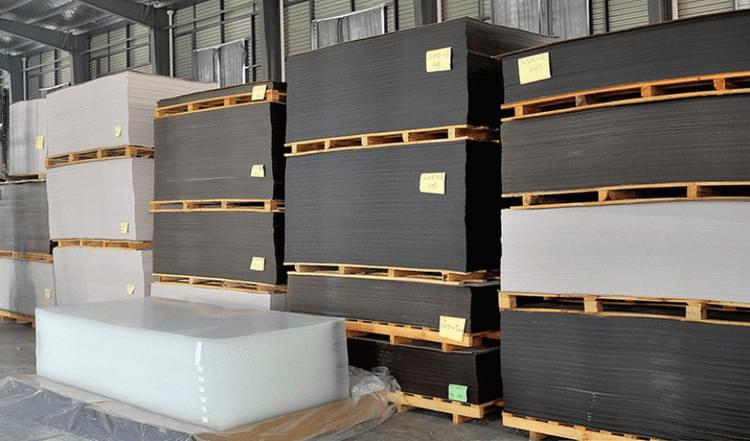Acrylic sheets are widely used in various industries and applications due to their versatility and durability. Whether you are a DIY enthusiast or a professional, proper storage of acrylic sheets is crucial to maintain their quality and prevent damage. In this article, we will explore the key factors to consider when storing acrylic sheets to ensure their longevity and usability.

- Temperature and Humidity Control:
Acrylic sheets are sensitive to temperature and humidity changes, which can cause warping, cracking, or brittleness. It is important to store acrylic sheets in a controlled environment with stable temperature and humidity levels. Ideally, the storage area should be cool, dry, and well-ventilated. Avoid exposing acrylic sheets to extreme temperatures or high humidity, as this can compromise their structural integrity. - Flat and Vertical Storage:
Acrylic sheets should be stored flat or vertically to prevent bending or warping. When storing flat, use a clean and level surface, such as a workbench or a dedicated storage rack. Ensure that the surface is free from any debris or sharp objects that could scratch the sheets. If storing vertically, use a sheet rack or specialized storage system designed to hold acrylic sheets securely in an upright position. This method helps prevent stress on the sheets and maintains their shape. - Protection from UV Light:
Acrylic sheets are prone to yellowing and degradation when exposed to prolonged UV light. To minimize UV damage, store the sheets in a dark or low-light environment. If exposure to natural light is unavoidable, consider using UV-protective film or covering the sheets with opaque materials. Additionally, avoid storing acrylic sheets near windows or in areas prone to direct sunlight. - Avoid Contact with Solvents and Chemicals:
Acrylic sheets can react with certain solvents and chemicals, resulting in discoloration, cracking, or surface damage. Store acrylic sheets away from areas where these substances are present, such as workshops or storage facilities containing harsh chemicals. If necessary, cover the sheets with a protective barrier, such as plastic film, to prevent contact with potentially damaging substances. - Handling and Stacking:
Proper handling and stacking techniques are vital to avoid physical damage during storage. When moving acrylic sheets, always use clean gloves or other protective gear to prevent fingerprints, smudges, or scratches. Avoid sliding or dragging the sheets across surfaces, as this can lead to abrasions. When stacking multiple sheets, use dividers or spacers to maintain a safe distance between each sheet and prevent pressure points or deformation. - Regular Inspection and Maintenance:
Periodically inspect stored acrylic sheets for any signs of damage, such as cracks, warping, or discoloration. If any issues are detected, address them promptly to prevent further deterioration. Regular cleaning using a mild soap or acrylic cleaner and a soft cloth can help maintain the sheets’ clarity and appearance.
Proper storage of acrylic sheets is essential to preserve their quality and extend their lifespan. By controlling temperature and humidity, storing them flat or vertically, protecting against UV light and chemicals, using proper handling and stacking techniques, and conducting regular inspections, you can ensure that your acrylic sheets remain in optimal condition for their intended use. Following these guidelines will not only protect your investment but also ensure the best results when working with acrylic sheets in various applications.
